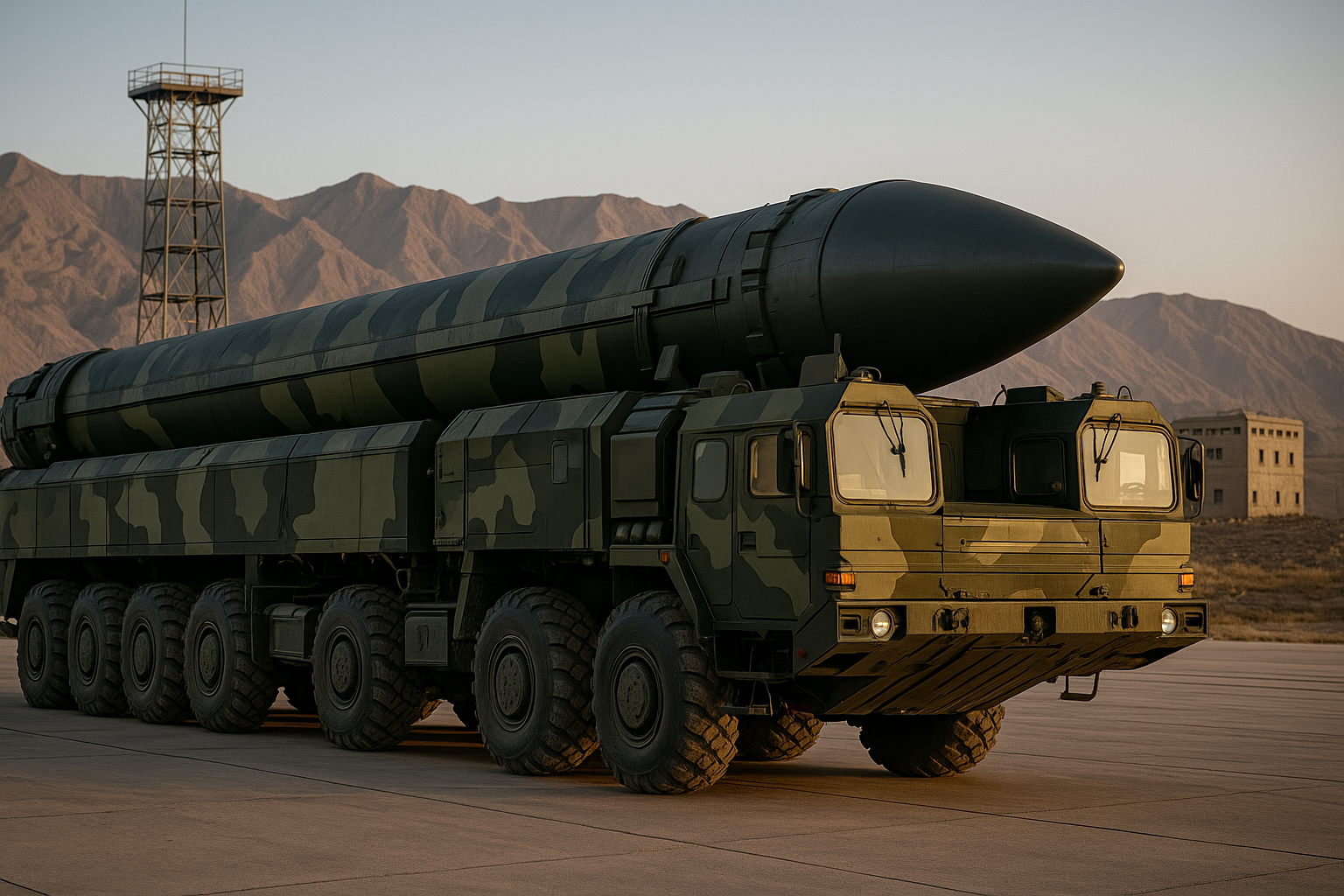When the first atomic device detonated over Xinjiang’s Lop Nur desert in 1964, Beijing entered the nuclear club with a blast designed as much for prestige as for security.
Six decades later, the People’s Liberation Army (PLA) remains the engine of China’s nuclear enterprise, driving it from crude fission experiments to intercontinental missiles and hypersonic glide vehicles that now unsettle global deterrence calculations.
From Tests to Missiles: The PLA’s Permanent Hand on the Button
Between 1964 and 1996 China conducted roughly forty-five tests, almost all at Lop Nur. Unlike in Western democracies—where civilian authorities set nuclear policy—the programme was always a PLA preserve.
Each detonation, from the 1967 thermonuclear breakthrough to the 1996 megaton-class finale, deepened the military’s control of the strategic domain.
When international norms closed the door on live testing, the locus of prestige shifted from the desert test site to the missile field. The PLA’s Second Artillery Corps—rebranded in 2015 as the Rocket Force (PLARF)—became the institutional heir to Lop Nur’s legacy, parading capability where it could no longer demonstrate yield.
The Rocket Force: Deterrence or Domination?
Beijing still declares adherence to a no-first-use policy, yet the scale and sophistication of its arsenal tell a more ambitious story.
Liquid-fuel rockets have given way to solid-fuel, road-mobile, and silo-based systems. The PLARF now practises coordinated salvos and long-range precision strikes that blur the line between nuclear deterrence and conventional coercion.
Exercises in Tibet, Xinjiang, and the South China Sea reveal how missile forces underpin China’s regional intimidation strategy as much as its global deterrent posture.
DF-41 and the Hypersonic Leap
The DF-41 intercontinental ballistic missile—capable of carrying multiple independent warheads over 12,000 km—symbolises this evolution.
It grants Beijing an assured second-strike capability against the continental United States while reinforcing the PLA’s technological pre-eminence inside China’s defence bureaucracy.
Even more alarming are the hypersonic glide-vehicle (HGV) experiments first observed in 2021, where a payload reportedly circled the globe before striking its target. Such manoeuvrable systems can out-run missile defences and compress decision times to seconds, magnifying the risk of miscalculation. They are, in essence, Lop Nur’s intellectual descendants—products of a military-industrial complex that treats technological surprise as a strategic weapon in itself.
Xinjiang: From Test Range to Missile Heartland
Xinjiang’s role did not end with the test ban. Commercial satellite imagery has exposed sprawling new silo fields near Hami and Yumen, signalling a rapid PLARF expansion.
The province that once hosted atmospheric blasts now anchors command centres, logistics corridors, and hardened launch facilities aimed at both India and Central Asia.
The militarisation of Xinjiang exemplifies how China’s internal repression, infrastructure build-out, and strategic deployments are mutually reinforcing facets of Party control.
A Civilian Counterpoint: India’s Managed Deterrence
Across the Himalayas, India’s approach offers a telling contrast. Its Strategic Forces Command answers to civilian leadership, and its doctrine centres on credible minimum deterrence and assured retaliation, not coercive signalling.
The Agni and K-series missiles, coupled with developing ballistic-missile defences, are intended to guarantee survivability rather than parity.
Where Beijing’s arsenal projects power, New Delhi’s aims for restraint.
The Enduring Legacy of Lop Nur
China’s nuclear modernisation cannot be separated from the political culture forged at Lop Nur. Each test cemented the PLA’s dominance within the Communist Party’s decision-making architecture, ensuring that strategic weapons would remain instruments of Party power rather than purely national defence.
Today’s DF-41 silos and hypersonic prototypes are physical manifestations of that legacy.
For Western and Asian security planners alike, the message is clear: China’s deterrent is not simply expanding—it is being integrated into a broader system of coercive statecraft. Managing this challenge will require not only technical counter-measures but an understanding that the PLA’s pursuit of technological supremacy is inseparable from the Party’s quest for political control.

